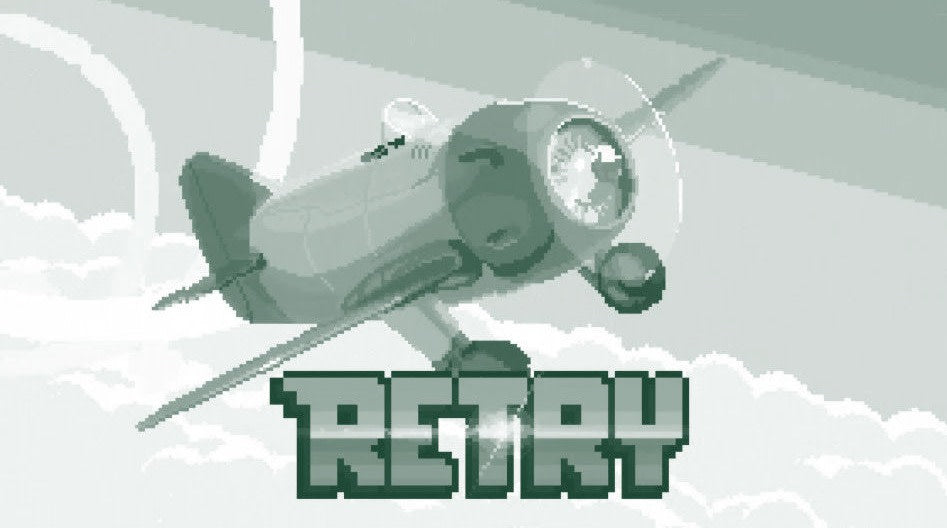Solving problems one button at a time.
KYLE CHAYKA
At some point in 2014, I downloaded an iPhone game called Retry, released by the game publisher Rovio, of Angry Birds fame (and fortune). I was probably first drawn in by its retro two-dimensional 16-bit aesthetic, straight from the Super Nintendo of my youth. The game has you pilot a brightly colored, pixelated airplane through brightly colored, pixelated levels, like a flying Super Mario. The only move you can make is accelerating by tapping and holding the screen.
Retry was simple. It was brilliant. I became intensely addicted and finished the game several times over, a matter of a dozen hours each. But one day last year, I deleted the game to clear space on my phone. Fine, I thought, I can just re-download it. Turns out I’ll never play the game again.
For reasons unknown to me, it’s been removed from both the iPhone and Android app stores. I’ve tried substitutes, like Downwell, Reigns, and Cat Bird. They’re all fine; it’s just that Retry was perfect.
The thing I look for most in an iPhone game is that elusive quality that programmers call “flow.” It means total immersion in an activity: your entire brain taken up by the act of writing important code, or flying a meaningless digital airplane. This immersion is so desirable because I mostly play iPhone games to distract myself, whether from the incipient terror of possible subway catastrophes or the more abstract adult anxieties of work deadlines and making rent.
Retry induced this flow state by requiring equal parts problem-solving and action. Piloting the plane depended on learned reflexes. You had to tap and hold the screen at just the right time to float through a gap or reach a high peak through open air. On some levels, wind gusts and waterfalls presented acceleration boosts. The real poetry of the game came when you could master gravity and pull everything off without struggling.
The game was a worthy successor to Mario at a time when Nintendo has all but abandoned 2D platformers. And in Retry, unlike Mario(save for Nintendo’s own iPhone version), you’re either moving or dead. This made achieving flow easy: you can’t think about anything else while playing except survival.
Like the more popular Flappy Bird, Retry made me nostalgic for the era of shitty online flash games I found on dial-up AOL: the days when playing virtual ping-pong with your mouse or loading Neopets seemed like a revolutionary thing to do online, instead of the likes-and-retweets contest we all play now on Twitter and Instagram. These simple games aren’t “open worlds.” They don’t tell epic stories. They present just one problem to solve and one activity to do. Refreshing, isn’t it?
Technological nostalgia is a thriving marketplace. I recently bought a SNES Classic, the tiny Nintendo device that comes loaded with 30 vintage games playable on HD TVs. The first time I loaded Mario Kart, the title screen soundtrack was Proustian, throwing me back to afternoons in the basement of my childhood home with my younger brother, when we spent hours terrorizing each other with red shells. No wonder the devices are so popular the only easy place to get them is eBay. They don’t load Netflix. You can’t share anything. All you do is play.
Which leaves me with just one question: Rovio, why did you kill it? I think it’s time for a ... Retry. I’m begging here.
Kyle Chayka is a writer in Brooklyn. His first book, on minimalism, will be published by Bloomsbury in 2019.
